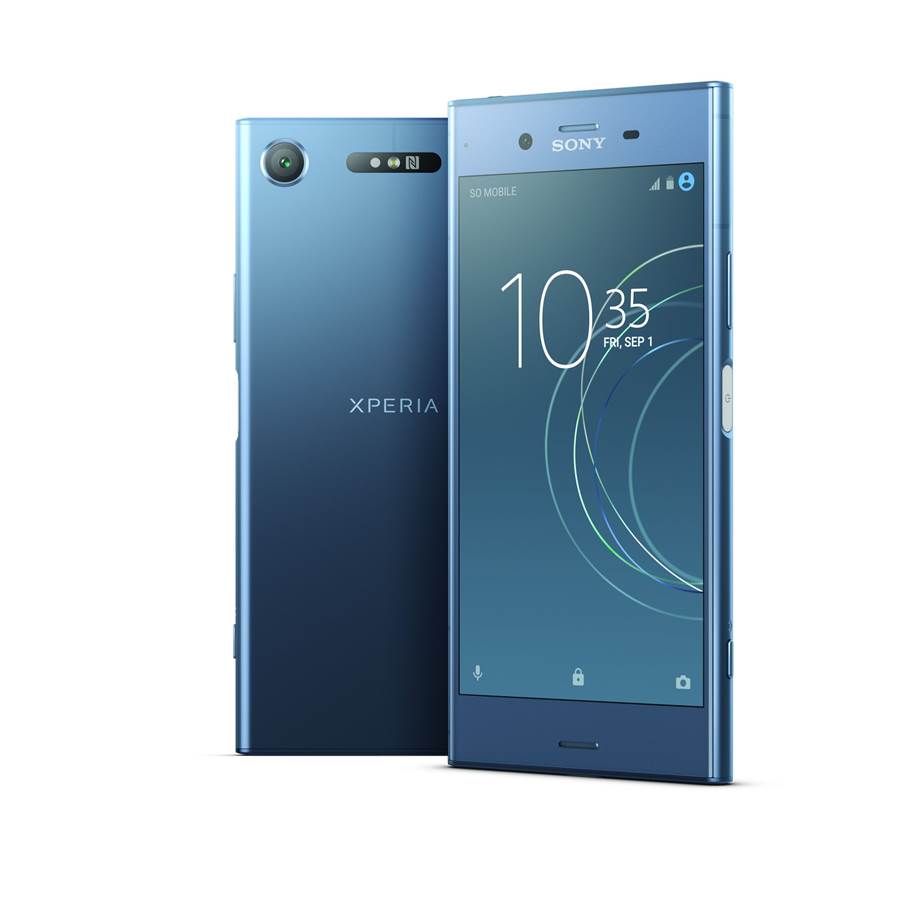
A solid phone with the intriguing addition of 3D scanning – if you can find a use for it.
Given the number of smartphones fighting for attention – just look at the rest of this month’s reviews section – it takes a lot to make a phone stand out. And the Sony Xperia XZ1 does that: what other phone supports 3D image scanning? Whether it’s genuinely useful or a gimmick is another matter.
First thing’s first: the Xperia XZ1 is a great-looking phone. Comprising a completely flat front and flat rear, gently rounded side and sharply cut-off top and bottom edges, it resembles the $1,099 Sony Xperia XZ Premium, the key difference being that the rear isn’t clad in glass but matte-finish metal. That makes it feel robust, but considering the size of the chassis I expected a larger screen than 5.2in. The OnePlus 5, for instance, has a 5.5in display and is around half a centimetre taller than the XZ1. It’s a good sight slimmer as well.
Still, the Sony is a practical phone. Although the battery is non-removable and there’s no dual-SIM support, it has a microSD card slot for expanding the storage, there’s a dedicated two-stage camera button on the right-hand edge and the phone is dust- and water-resistant to IP68. As with many of its other phones, Sony builds a fingerprint reader into the indented power button on the right edge, too.
The 1,920 x 1,080 pixel count means a high pixel density of 424ppi; it won’t be the best phone to plonk in a VR headset, but for most purposes it’s absolutely spot on. At default settings, the display looks extra vivid; some may like this, but I find it too heavy-handed. Everyone looks as if they’ve just been spray-tanned. Switch to Standard or Professional settings, with the latter calibrated to target the sRGB colour space.
Readability in bright conditions is great, with a peak brightness of 539cd/m2, while the contrast ratio reaches 1,313:1. This is a fine display, make no mistake about it.
Inside, there’s more good news. The phone runs Qualcomm’s Snapdragon 835 chip, the top-end silicon that also powers the OnePlus 5. There’s 64GB of storage, 4GB of RAM and, notably, the device runs Android 8 Oreo. As usual Sony uses its own launcher overlay, which adds extra organisational features to the app drawer among other nice-to-have extras, including Sony Remote Play (this allows you to stream gameplay from your PlayStation to the screen of the phone).
When it comes to performance, the XZ1 is right up there with the best. Battery life is disappointing, though, and that’s surprising for a Sony phone, let alone one with a Snapdragon 835 on board. A time of 11hrs 53mins in our video-rundown tests is mediocre when compared with the mighty OnePlus 5, which lasted 20hrs 40mins.
When it comes to the camera, the Xperia XZ1 holds up well on paper compared with rivals. The resolution is 19 megapixels with an f/2 aperture, it has electronic image stabilisation for smooth video capture, and “predictive” phase detect and laser autofocus systems for quick shooting in a variety of lighting conditions.
It takes good photos, too. Images are wonderfully detailed in good light, courtesy of the 19-megapixel sensor. There’s a tendency for the software to over-sharpen details, but you should be happy with the results. In low light the camera performs well again, albeit with some noise. Overall, quality is better than the OnePlus 5 but not as strong as the Samsung Galaxy S8.
The phone’s 3D image scanning feature is a mixed bag, too. It works simply enough: just point the rear camera at an object of your choice – faces, food, docile pets – follow the dotted lines onscreen, and tap to confirm once you’ve finished.
All the post-processing is performed on the phone itself, and after you’ve captured your object you can export the file for printing out, if you happen to have a 3D printer to hand. The obvious question: is this something you should pay good money for? I’m not convinced. The process is slow and fiddly and accurate results are hard to come by. You need a steady hand, patience and plenty of space around your subject so you can circle it. Even then you’re not guaranteed a flawless scan; after multiple attempts, scans of my head looked even worse than the real thing.
The 3D scanning feature is good for a laugh if you want an icebreaker at a party, but Sony is going to have to work harder than this if it wants to sell more smartphones.
That’s not to say you shouldn’t buy a Sony Xperia XZ1. It’s a fine specimen of modern phone, with a superb screen, a decent camera, lovely design and weatherproofing, plus a super-fast processor.
The problem is that at $759 it’s similarly priced to the OnePlus 5 and the Samsung Galaxy S8 – and both phones have more flexible camera setups, better battery life and larger screens than the Xperia XZ1. Watch its pricing in the weeks ahead though, the $759 we’re quoting is what early importers are charging, Sony’s official price and street price may be lower once it’s officially out here.


0 comments:
Post a Comment